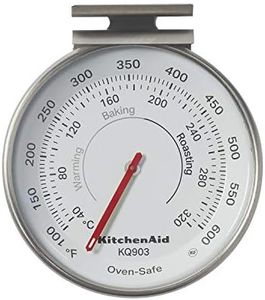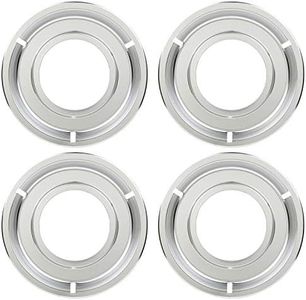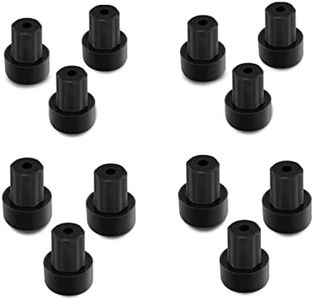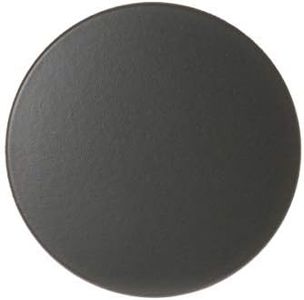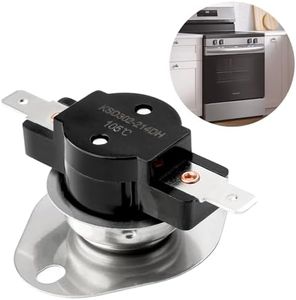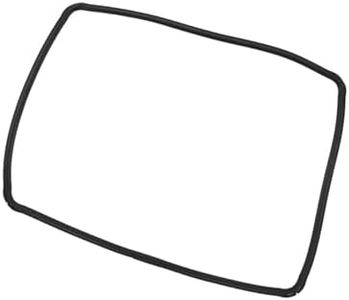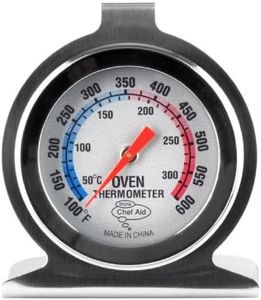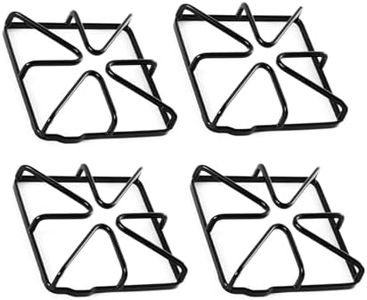We Use CookiesWe use cookies to enhance the security, performance,
functionality and for analytical and promotional activities. By continuing to browse this site you
are agreeing to our privacy policy
10 Best Gas Ranges
From leading brands and best sellers available on the web.Buying Guide for the Best Gas Ranges
Choosing the right gas range for your kitchen can make cooking more efficient and enjoyable. When shopping for a gas range, consider how you cook, the space you have available, and the types of meals you prepare most often. It's important to focus on the key features and specifications that will fit the way you use your kitchen while also making sure the appliance will fit your space comfortably and safely.Size (Width)The size, usually measured in inches, refers to the width of the gas range. Common residential sizes are 20, 24, 30, and 36 inches. This spec is crucial because it needs to fit the available space in your kitchen and align with your countertop and cabinetry. Smaller ranges, around 20-24 inches, are suitable for compact spaces like apartments or small kitchens where space is tight. A standard 30-inch range is a good fit for most households, offering a balance between cooking capacity and space. Larger ranges, such as 36 inches or more, are typically chosen by people who frequently cook large meals or like to entertain often. To pick the right size, measure the space where your range will go, including the height and depth, taking into account any nearby counters or walls.
Number of BurnersThe number of burners determines how many pots or pans you can use on the cooktop at the same time. Basic models have four burners, while larger models can have five, six, or even more. More burners offer flexibility if you cook complex meals with multiple dishes or have a large family. If you mostly cook simple meals or have limited countertop space, four burners will likely be enough. Choose a burner quantity based on how many dishes you typically prepare at once.
Oven CapacityOven capacity is measured in cubic feet and tells you how much space is inside the oven for baking or roasting. Smaller ovens (under 4 cubic feet) are fine for individuals or couples who rarely use the oven. Mid-size ovens (4-5 cubic feet) work well for average families or those who bake regularly. Larger ovens (5+ cubic feet) are great for people who host gatherings or bake large items like turkeys. Consider your cooking habits—if you often use multiple racks or bake for several people, opt for a bigger oven.
Burner Power (BTUs)Burner power is measured in BTUs, which stands for British Thermal Units, and indicates how hot each burner can get. Standard burners are around 7,000 to 10,000 BTUs, while high-power burners can go up to 15,000 BTUs or more. More BTUs mean faster boiling and better searing. Some ranges also have a low-power simmer burner for delicate sauces. If you often need strong heat for stir-frying or boiling large pots, look for at least one high-BTU burner. If you cook delicate dishes or sauces, make sure there's a low-BTU burner as well.
Oven Type (Standard vs. Convection)Standard ovens use stationary heating elements, while convection ovens have a fan that circulates hot air for even cooking and faster results. Convection ovens are excellent for baking multiple trays at once or roasting meats evenly. If you frequently bake or roast, a convection oven could be a good choice. If most of your cooking is simple or you rarely use the oven, a non-convection (standard) oven should be enough.
Control Type (Knobs vs. Touch Panels)Gas ranges come with traditional control knobs or modern touch panels. Knobs provide tactile control and are very durable, whereas touch panels offer a sleeker look and can have extra features like timers and presets. If you prefer a classic feel and straightforward use, stick with knobs. If you like modern convenience and extra features, consider a touch panel.
Grates (Continuous vs. Individual)Cooktop grates support your pots and pans over the burners. Continuous grates cover the entire surface, making it easy to slide pots from one burner to another. Individual grates are lighter and easier to clean. If you often move heavy pots around or like a seamless look, continuous grates are useful. If you prefer easier cleaning or have limited grip strength, individual grates might be better.
Self-Cleaning OptionSelf-cleaning ovens have a feature that heats the oven to very high temperatures to burn off food residue, reducing the amount of manual scrubbing required. If you dislike cleaning your oven, this can save time and effort. If you don’t mind cleaning or rarely use your oven, this may not be as important.
Safety FeaturesModern gas ranges can include safety features like automatic shut-off, child locks, and flame failure devices. These are important for households with children, pets, or elderly family members. If safety is a concern for you, pay attention to the safety features listed.



